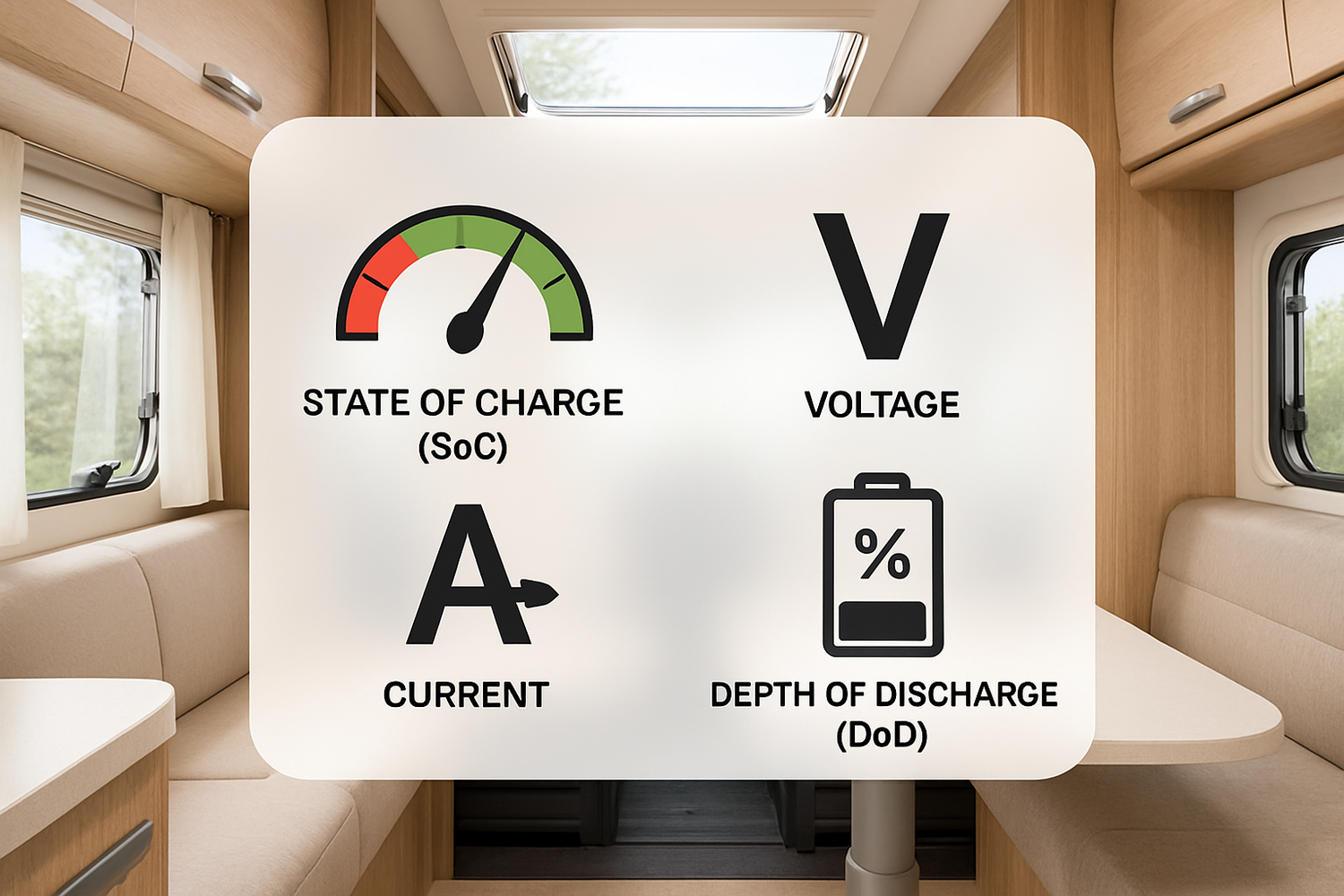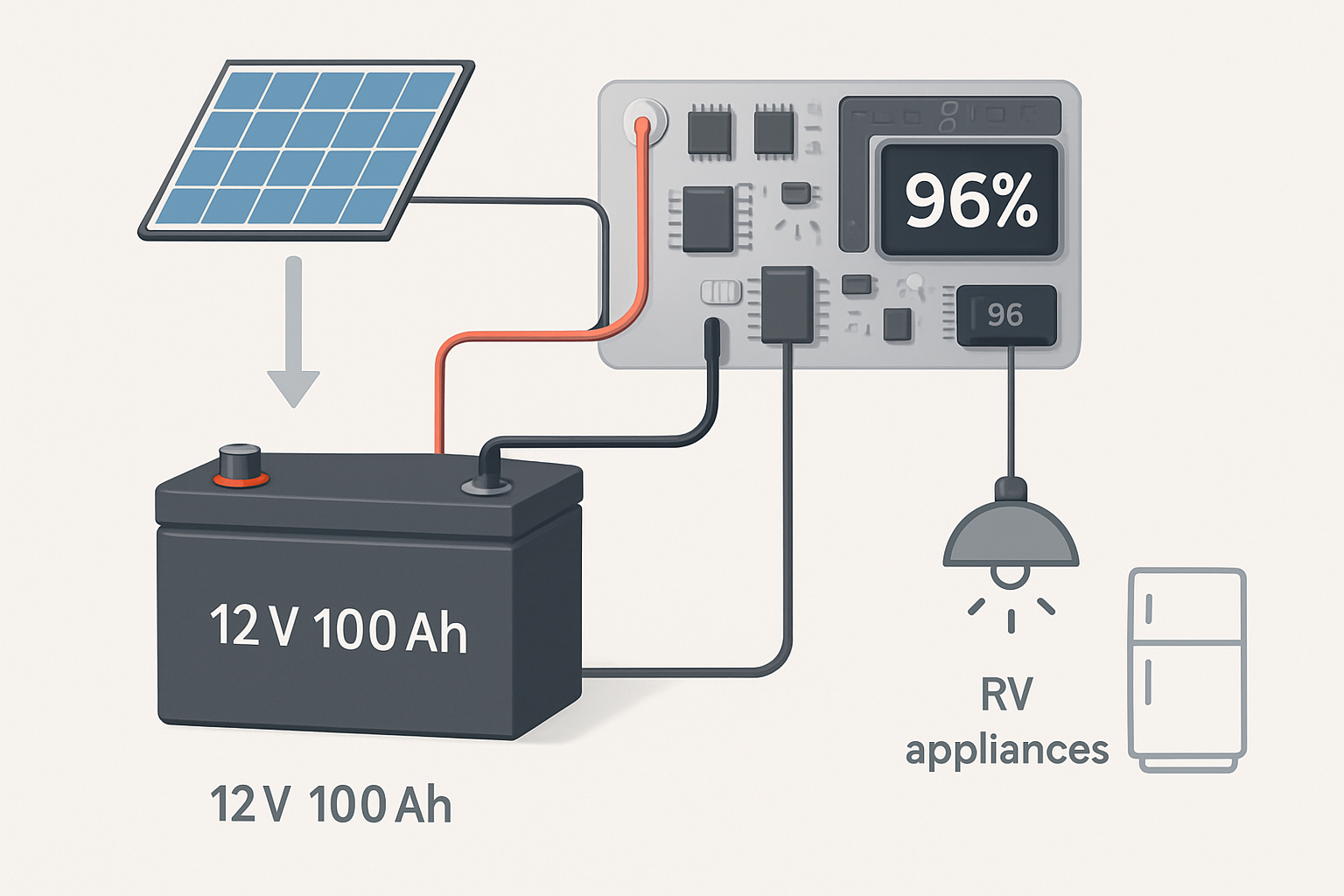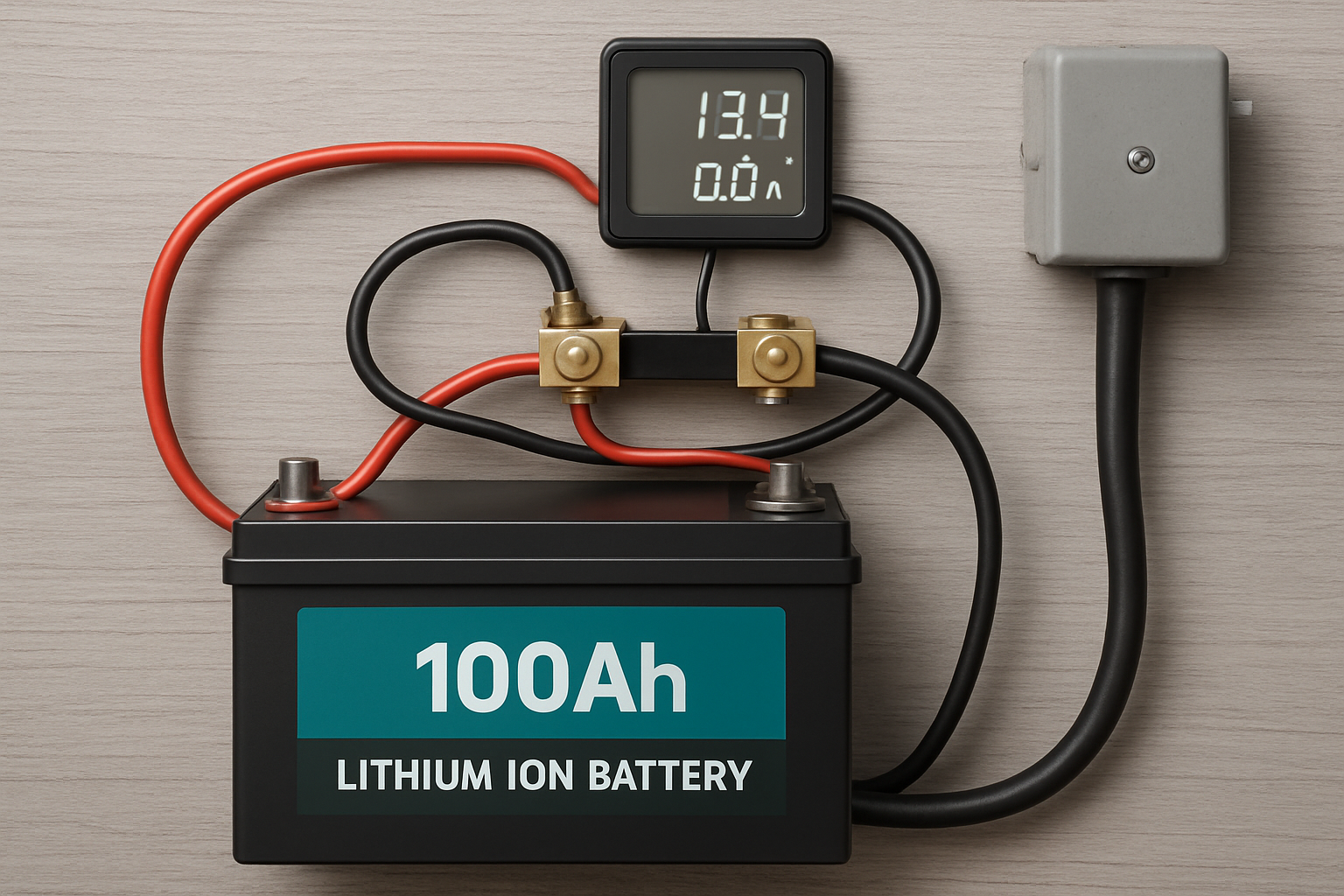Upgrading your RV's power system to a 12V LiFePO4 battery is a significant step towards energy independence. These batteries offer a longer lifespan, lighter weight, and better performance compared to traditional lead-acid options. However, to truly benefit from this advanced technology, you need an accurate way to monitor its status. Guessing your battery's charge level is not a reliable strategy and can leave you without power unexpectedly. This text explains the correct methods and tools for precise RV battery monitoring, ensuring you have reliable power for your adventures.
Why Traditional RV Battery Monitoring Falls Short for LiFePO4
Many RVs come equipped with a basic, factory-installed battery monitor. These are typically simple voltmeters designed for lead-acid batteries. While this approach works for older battery chemistries, it is fundamentally inaccurate for LiFePO4 technology.
The Flat Voltage Curve of LiFePO4 Batteries
The primary reason voltage-based monitoring is ineffective for LiFePO4 batteries is their remarkably flat voltage curve. Unlike a lead-acid battery, whose voltage steadily drops as it discharges, a LiFePO4 battery maintains a nearly constant voltage throughout most of its discharge cycle. It will hold a steady voltage until it is almost completely depleted, at which point the voltage drops off sharply. This characteristic makes it nearly impossible to determine the state of charge based on a voltage reading alone. For example, a LiFePO4 battery might read 13.2V whether it's 90% full or only 30% full, giving you a false sense of security.
| State of Charge (SoC) | LiFePO4 Battery Voltage (Approx.) | Lead-Acid Battery Voltage (Approx.) |
|---|---|---|
| 100% | 13.6V | 12.7V |
| 75% | 13.3V | 12.4V |
| 50% | 13.2V | 12.2V |
| 25% | 13.0V | 12.0V |
| 0% | 10.0V | 11.8V |
The Impact of Inaccurate Readings
Relying on an inaccurate monitor can lead to several problems. The most obvious is an unexpected loss of power, which can disrupt your trip and potentially spoil food or disable essential equipment. Furthermore, repeatedly draining the battery completely because of poor monitoring can affect its long-term health. Effective power management, such as deciding when to run a generator or conserve energy, becomes impossible without a precise understanding of your available power.
The Gold Standard: Using a Shunt-Based Battery Monitor
To get a truly accurate reading of your LiFePO4 battery's status, you need a device that measures energy flow, not just voltage. The most reliable tool for this job is a shunt-based battery monitor.
How a Shunt-Based Monitor Works
A shunt-based monitor, also known as a coulomb counter, acts like a fuel gauge for your battery. It uses a device called a shunt, which is installed on the main negative cable connected to your battery. This shunt precisely measures the amount of current (amps) flowing into and out of the battery. By tracking these amp-hours, the monitor calculates the exact State of Charge (SoC) in real-time. It gives you a clear percentage, so you know precisely how much energy is left.
Key Features to Look For in a Monitor
When selecting a shunt-based monitor, consider these features:
- Bluetooth Connectivity: Many modern monitors connect to a smartphone app, allowing you to check your battery status conveniently.
- Clear Display: The monitor should provide essential data at a glance, including SoC, voltage, current (amps), power (watts), and time remaining.
- High Precision: Look for a monitor with a high-amperage shunt (e.g., 500A) to handle the loads in an RV.
- Easy Installation and Setup: A good monitor will have clear instructions for installation and a straightforward process for calibrating it to your specific battery bank.
Installation and Calibration Basics
Installation typically involves placing the shunt in line with the main negative battery cable, so all current must pass through it. After installation, you must calibrate the monitor by inputting your battery's capacity (e.g., 100Ah). Then, you fully charge the battery to 100%. This synchronizes the monitor, ensuring its future readings are accurate.
Understanding Key Metrics for Your LiFePO4 Battery
An advanced battery monitor provides a wealth of data. Understanding these key metrics will help you manage your RV's power system effectively.
State of Charge (SoC) vs. Depth of Discharge (DoD)
SoC is the remaining capacity shown as a percentage. Depth of Discharge (DoD) is the inverse; it represents the percentage of the battery's capacity that has been used. According to an ultimate reference on solar storage performance, one of the main advantages of LiFePO4 batteries is their ability to handle a deep depth of discharge without sustaining damage. You can regularly use 80-90% of the battery's capacity, a significant improvement over lead-acid batteries, which are typically limited to a 50% DoD to preserve their lifespan.
Voltage and Current: What They Tell You
While voltage is not a reliable indicator of SoC, it remains a vital health metric. A sudden, significant voltage drop under load could indicate an issue with your system or an appliance drawing excessive power. Current, measured in amps, shows you how quickly energy is being used (discharging) or added (charging). This is useful for identifying which appliances consume the most power.
C-Rate and Its Importance
The C-rate describes the rate at which a battery is charged or discharged relative to its capacity. As noted in the Innovation Outlook: Smart charging for electric vehicles, monitoring parameters like charging speed is crucial for battery health. For a 100Ah battery, a 1C discharge rate is 100 amps. Understanding your battery's recommended maximum continuous C-rate helps prevent overpowering it with heavy loads, ensuring its longevity.
Integrating Monitoring with Your Overall RV Energy System
Accurate battery monitoring is a cornerstone of a reliable and efficient off-grid power system. It works in concert with other components to provide a complete picture of your energy situation.
The Role of the Battery Management System (BMS)
Every LiFePO4 battery has an internal Battery Management System (BMS). The BMS is a safety circuit that protects the battery cells from over-charging, over-discharging, extreme temperatures, and short circuits. It is important to recognize that the BMS is a protective device, not a user-facing monitoring tool. While essential for safety, it does not report the battery's SoC to the user.
Connecting with Solar Charge Controllers and Inverters
A shunt-based monitor integrates perfectly with a solar power setup. It allows you to see exactly how much power your solar panels are producing and how much of it is making it into your batteries. Research from the U.S. Department of Energy highlights that providing real-time data on a PV system's performance can increase production and improve fault tolerance. According to the EERE Success Story—How Power Optimization Technology Research Built a Successful U.S. Business, this data helps operators maximize output. When combined with data from your solar charge controller and inverter, you gain a holistic view of your entire energy ecosystem, from generation to storage to consumption.
A Smarter Approach to RV Power Management
Switching to a 12V LiFePO4 battery is an excellent investment in your RV's electrical system. To fully protect that investment and enjoy the peace of mind that comes with it, adopting an accurate monitoring method is not optional—it's necessary. A shunt-based battery monitor removes the guesswork, providing the precise, real-time data needed to manage your power effectively. This allows you to travel with confidence, knowing exactly how much energy you have available for the road ahead.
Frequently Asked Questions
Can I use my RV's built-in monitor for a LiFePO4 battery?
Most factory-installed RV monitors are voltage-based and designed for lead-acid batteries. Because of the flat voltage curve of LiFePO4 chemistry, these built-in monitors will not provide an accurate State of Charge. For reliable readings, an upgrade to a shunt-based monitor is highly recommended.
How often do I need to calibrate my battery monitor?
After the initial installation and setup, a quality shunt-based monitor remains very accurate. However, it is a good practice to fully charge your batteries until the charger shuts off every few weeks. This allows the monitor to automatically re-synchronize to a 100% state of charge, correcting any minor tracking drift that might occur over many cycles.
What is a safe Depth of Discharge (DoD) for a 12V LiFePO4 battery?
LiFePO4 batteries are well-known for their excellent deep-cycling capability. You can safely and regularly discharge them to 80% or even 90% DoD without causing significant harm or reducing their lifespan. This gives you access to more usable energy compared to lead-acid batteries.
Does the BMS monitor the battery's state of charge?
The primary function of a Battery Management System (BMS) is to protect the battery's cells from operating outside of safe limits (voltage, current, temperature). While it uses voltage to perform these functions, it is not designed to provide a precise, user-facing State of Charge percentage like a dedicated, shunt-based battery monitor can.





Leave a comment
All comments are moderated before being published.
This site is protected by hCaptcha and the hCaptcha Privacy Policy and Terms of Service apply.